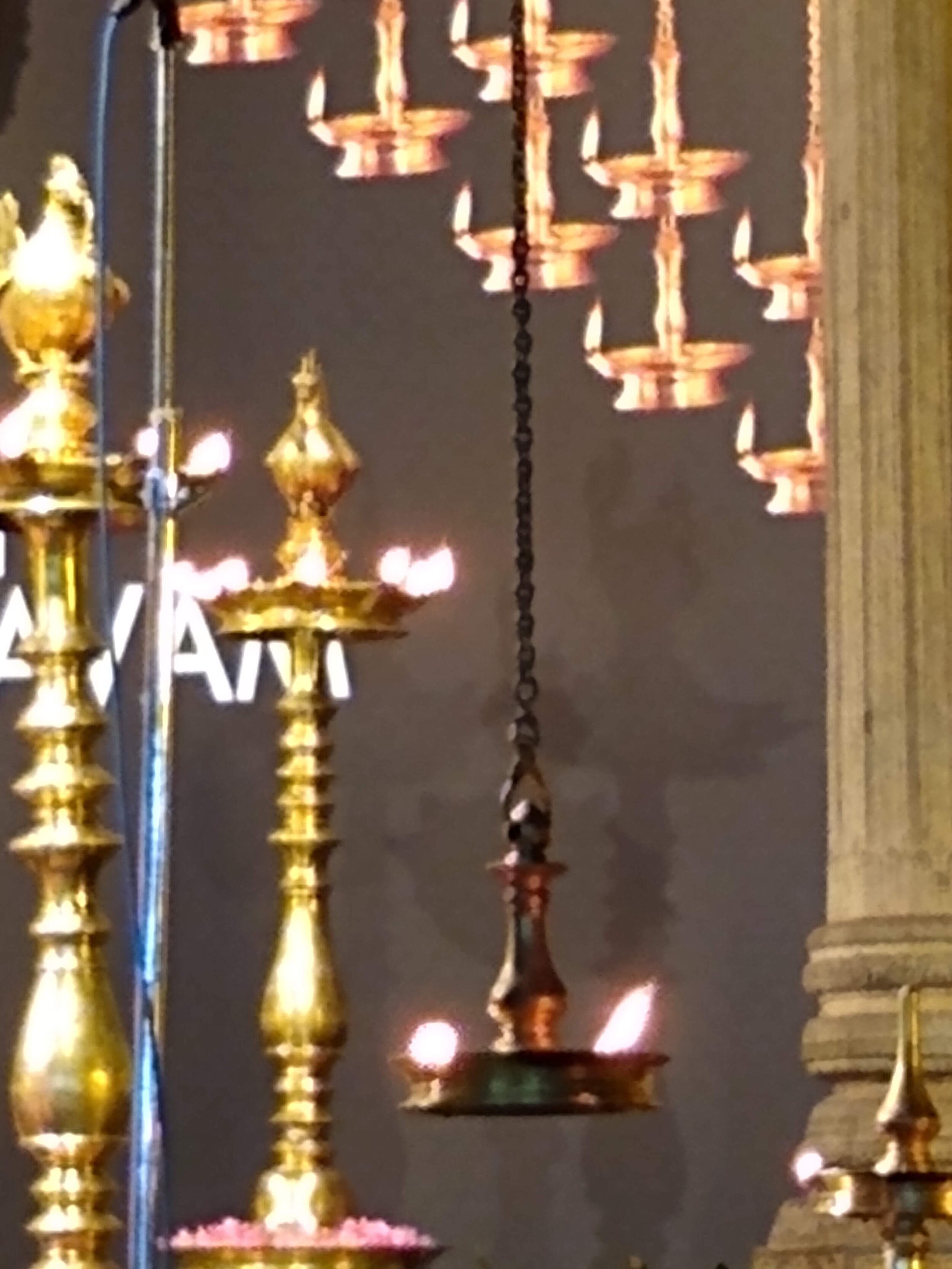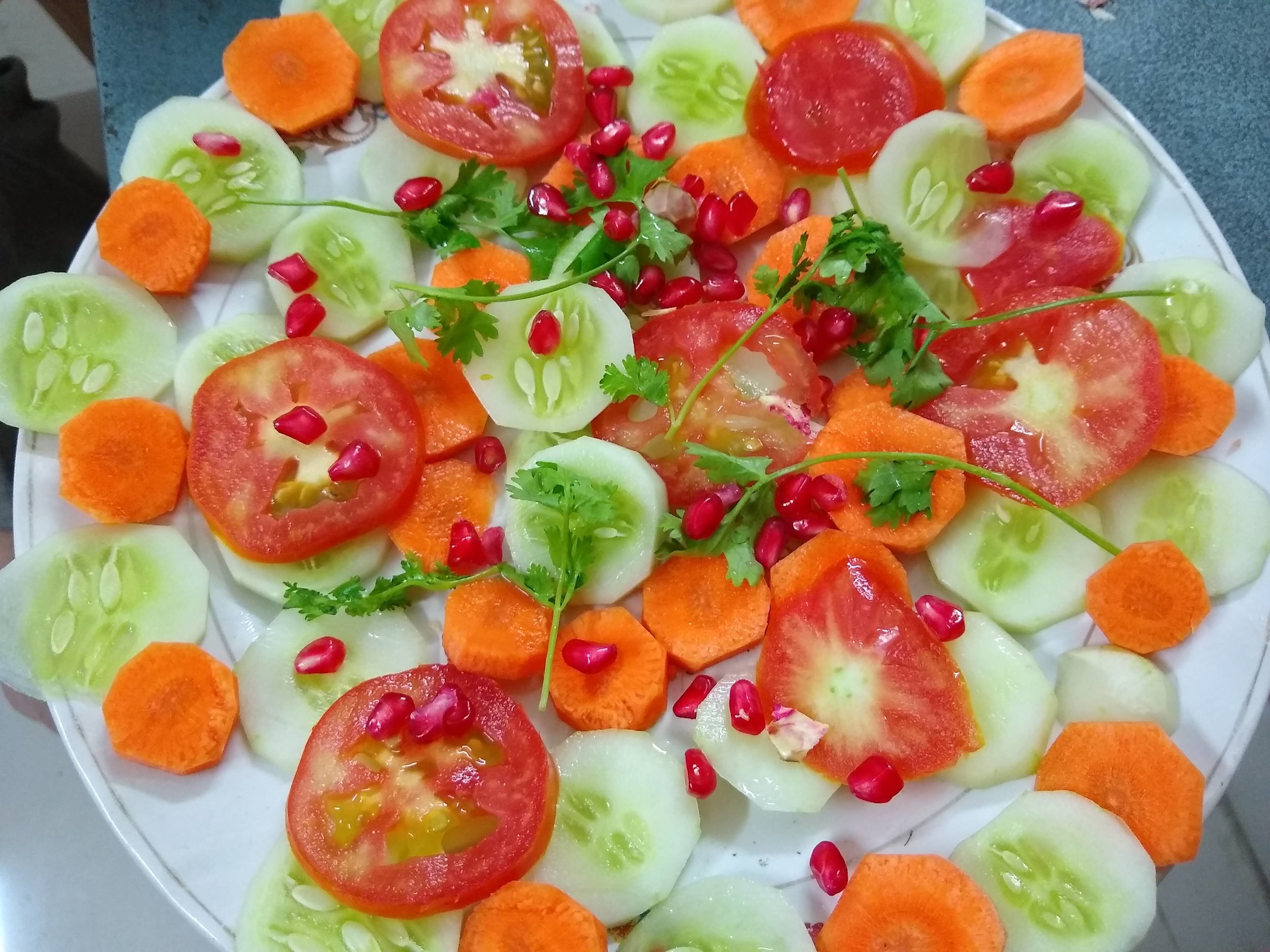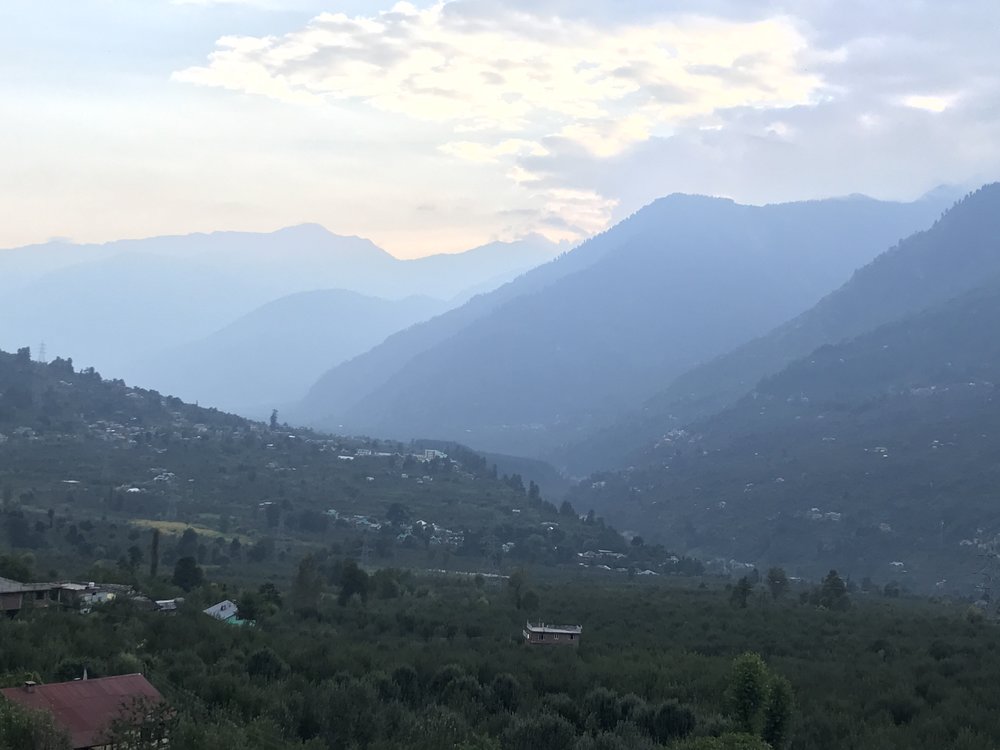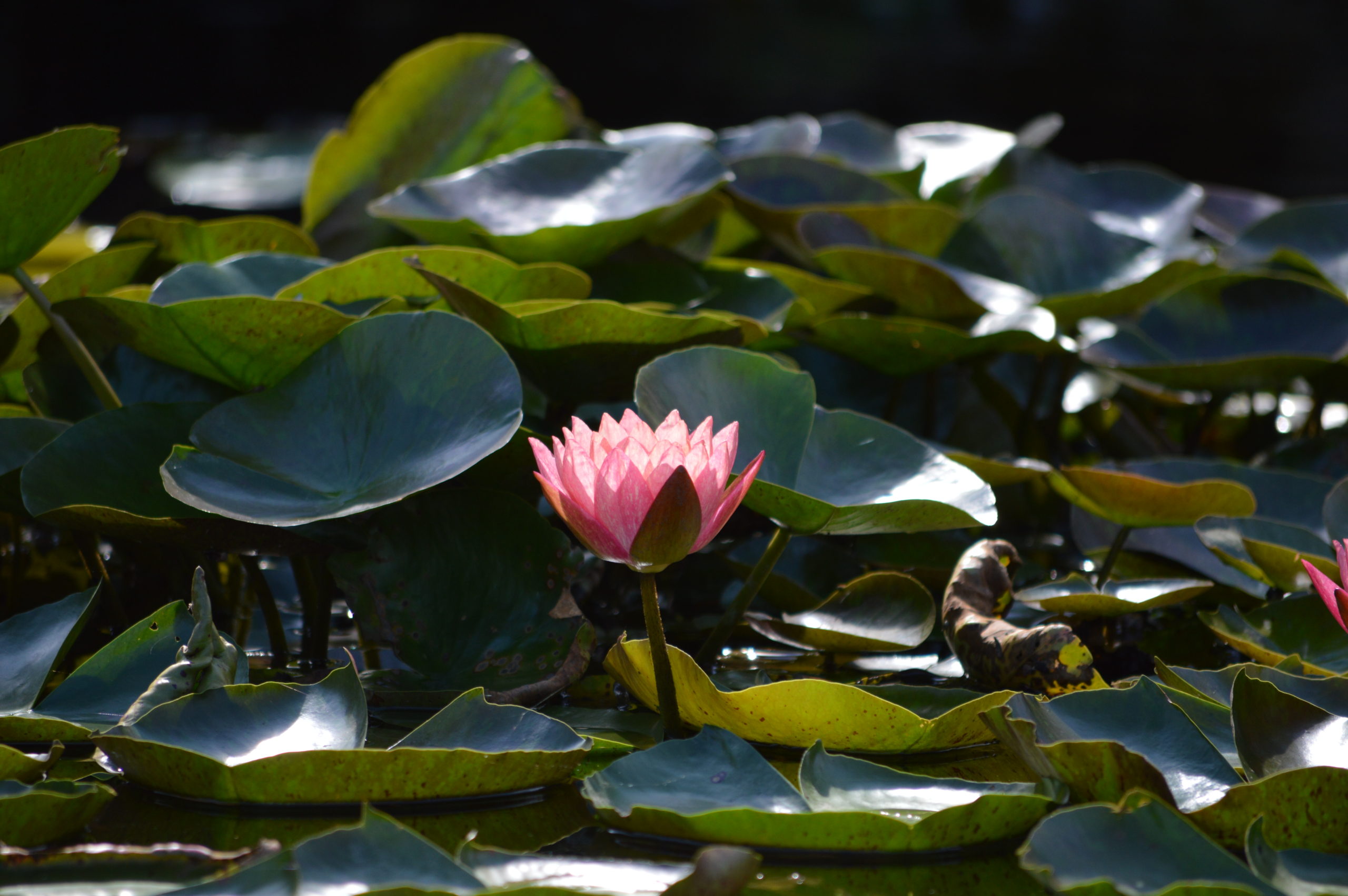
It has been more than a week since we experienced this – and it is still difficult to come down from the heavens and put this into words. We’ll try.
All our lives, we have enjoyed music. While Lakshmi has had some formal training as a child, Prabu brings unadulterated ignorance to music. But we’d swayed to music, been moved by it, enthralled and uplifted by it. In Thiruvananthapuram, we have been moved to ecstasy by music.
Well, it did pour – a torrential storm, a huge deluge (sorry, couldn’t help ourselves <grin> ) – during the opening concert of the music festival, Swathi Sangeethotsavam 2020. The sudden downpour did not deter the performers, who were clearly getting wet. As you will notice in this photo, the rain pours down from the heavens and the music continues unabated. The performers – quite literally – did not miss a single beat. The audience stayed right where they were and continued to beat the rhythm – the talam – and record on their phones (we had the meager protection of a pandal, a tent that was no match for the intensity of the storm, but we did not care). The organizers moved in the rain to cover the sound system and such, but the only umbrellas in sight were a couple to shield the video camera. Sankara Sastry would have been proud!
The concert by Ms. Amrutha Venkatesh kicked off the Swathi Sangeethotsavam 2020. Her constant pleasant smile and the seeming ease with which she rendered various compositions of Maharajah Swathi Thirunal – in both Carnatic and Hindustani schools of music – hid the enormous effort and practice that has brought her to stage this evening. During the introduction, we learned how Ms. Amrutha has overcome personal challenges with a dedication that left us in wonder. She speaks, reads and writes in Telugu, Tamil, Kannada, Malayalam, Hindi and Sanskrit (that we know of), so she understood the meaning of every syllable of each song that she sang. That mastery, devotion and love came through to us in the audience. Each song was rendered with clarity and even the storm couldn’t compete with her voice or the enthusiasm of her co-performers.

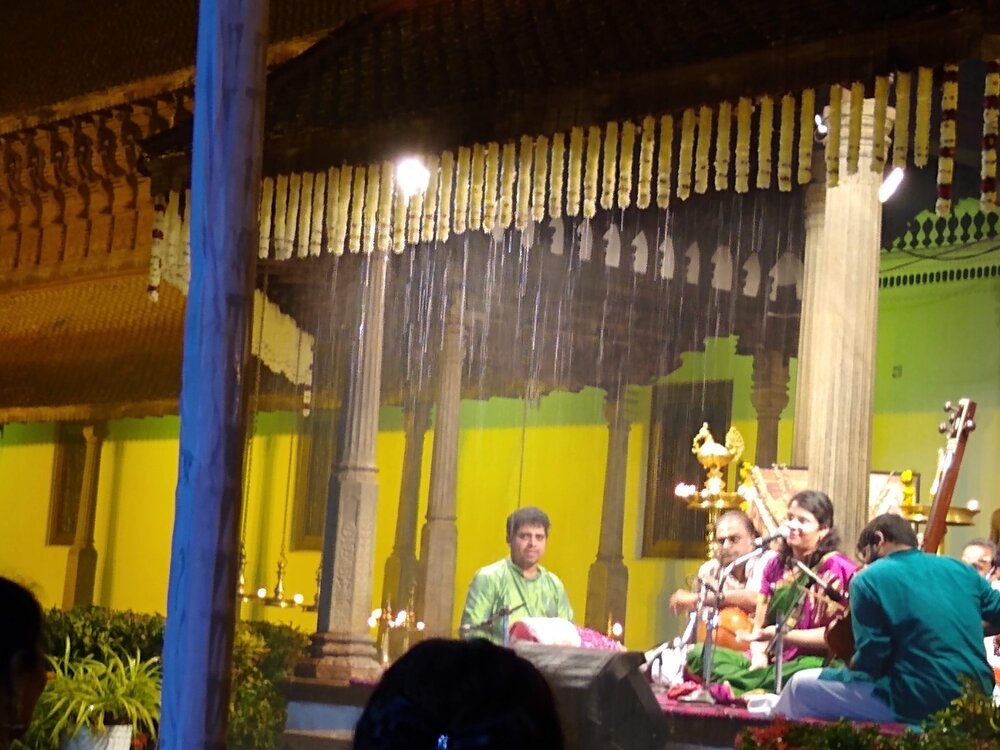
Concert continues during the deluge. An Amrutha varsham.
We thought that we’d been in heaven, with the experience served up by Ms. Amrutha and her team of extremely talented musicians. [A PDF of the entire cast and line up of this year’s music festival is available here]. For us, it was an amrutha varsham (a deluge of sheer joy – and a pun on the lead singer’s name). We thought that that this was it – its OK to leave Kerala now, since nothing can come close to this evening’s experience.
We were wrong!
On Day Two, Sri. Rama Varma and his special band of magicians held us spellbound. Sri. Varma (he’s known as Prince Rama Varma since he hails from the lineage of the royal family of Travancore) was introduced by Ms. Amrutha as “a prince among musicians and a musician among kings”… and this was so apt! Constantly smiling, uplifting each of his co-performers, Sri. Varma made this evening’s unforgettable journey seem effortless. In a couple songs, it felt as if we were listening to his guru (and our musical hero), Sri. Mangalampalli Balamurali Krishna in person. This group of performers had been on stage together for years and it showed in the total harmony of the combined output: a real team effort. That Sri. Varma does not need to play the prima donna and dominate the stage speaks volumes about his self-assured, empathetic, generous nature.
That generosity came through each night as he introduced the performers, heaping praise on each, yet always sounding sincere. His generosity came through in another way, as we realized that he, his family trust and a handful of donors made this entire festival available for free to the public. If you’d like to support this worthy cause, please ask us, we have the details on how you could be of help in ensuring this hidden gem remains free as it continues into years to come. Did we say FREE? Ten days each year, from January 4 to Jan 13 (this year we got a bonus concert on the 14th). For 22 years and counting… Wow! No restrictions on photos, audio or video recording – in fact, the audience was encouraged to record and share on the social media. Unusual!
The location too is unique. On the grounds of a palace with only a couple feet separating the audience from the stage, it is an intimate affair. The palace is called Kuthiramalika (pronounced ku-dhira-maa-lige) and has wooden horses along its sides, from which it derives the name. The “stage” is actually a projection from the verandah that surrounds the palace, and was probably where dancers and musicians entertained royalty over the generations. The seating is on the lawn in front of this stage. The only thing that detracted from the glorious setting was the pandal, a tent-like structure without which this would have been an under-the-stars concert… but that pandal proved its worth as it prevented the audience from having to swim on day one. The simplicity of the stage decoration is its unique point. The decoration really consisted of brass lamps which were continually fed oil by stoic volunteers. A row of flowers hung from the ceiling, a few flower pots on the steps leading to the stage, some flowering Ixora bushes that formed the hedge, that was it! Simple elegance!

A beautiful venue
The palace is next to the Padmanabhaswamy Temple and all the songs of the Maharaja extol that same deity.

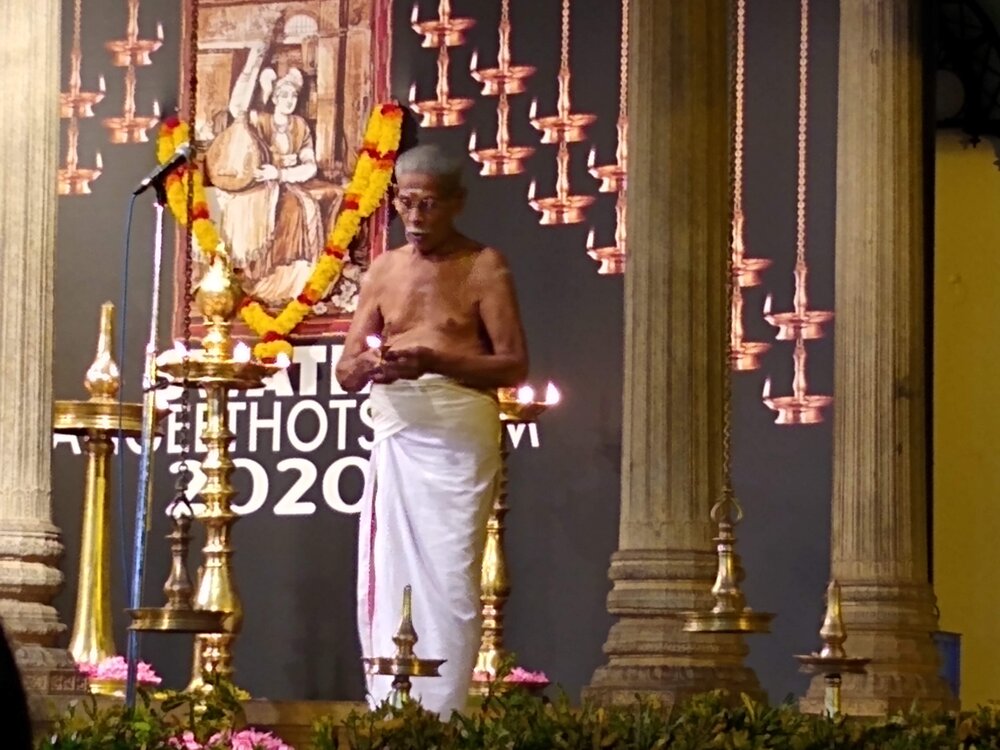
Stoic volunteers kept the lamps going throughout the festival.
Over the duration of the festival, we got to listen to legends like the 87-year-old Padmabushan Sangeeta Kalanidhi Dr. T.V. Gopalakrishnan (or TVG as he is lovingly called) and stalwarts like Sangeeta Kalanidhi Sanjay Subrahmanyan. Not quite as well known (yet) but these singers also moved us: Smt. H. Ratna Prabha and Ms. Amritha Murali in addition to the two magicians (oh, sorry, musicians) that we started off talking about. [We missed a couple of concerts because we briefly ran away to Kanyakumari, but that is another story]. All the accompaniment players with TVG were his disciples, since he is a master not only of vocal (Carnatic and Hindustani) but also of the mridangam and the violin. He even played the jazz and has earned his doctorate in 2018 at the age of 86 with original research! Babaji, you are in exalted company!
>
“We thought that that this was it – its OK to leave Kerala now, since nothing can come close to this evening’s experience.We were wrong!”
It was clear why the highest honorific title of Sangeeta Kalanidhi was bestowed on the two singers – but what came as a delightful surprise is their stamina! That at 87, TVG can thunder from the stage for three hours (his voice must have a range of at least two octaves) was impressive and no less that Sri. Subrahmanyan did not even take a sip of water nor pause for even a minute between songs. Sri. Subrahmanyan had a kind smile throughout and was so very appreciative of his co-performers. Was it his son sitting cross-legged and swaying to music at the back of the stage?
Flute recital by Sri. Amith Nadig packed such energy! At times, we could be forgiven for thinking that we were lost in the Call of theValley and that Pandit Hari Prasad Chaurasia was on stage.
The percussionist teams were outstanding! The unusual impressions first: Kanjira and Morsing. Sri. Anirudh Athreya on Kanjira performed incredibly, with Sri. Subrahmanyam. We didn’t know that such sounds were possible from an Kanjira – if we closed our eyes, it was possible to imagine that the Mridangam was producing those powerful sounds. Smt. Bhagyalakshmi M. Krishna created in us a love and respect for the Morsing. She accompanied Ms. Amritha Murali. Again, how did she even produce such sounds on this seemingly simple instrument? And she was smiling pleasantly throughout! On the Mridangam, we were worried for Chengalam Sri Sinesh’s blood pressure: he simply has only one setting and that is MAXIMUM! From the first beat to the last, he was on that setting as he accompanied Sri. Nadig… and during his solo he simply went even higher. Maybe even Sri. Ella Venkateswara Rao was mild compared to the tornado-like intensity Sri. Sinesh brought to our favorite percussion instrument of Carnatic music. Very different but equally memorable Mridangam was the outpouring from the hands of Dr. G. Babu. As we learned, Dr. Babu is a percussionist, a composer of Thillanas and also a medical doctor.
We are touched by Dr. Babu’s kindness and generosity. When we asked him where we could buy his CD, he offered to give us a copy. Due to logistics, we had to leave it to the last day. Yesterday evening, after the concert, when he could not locate us on-site, he called and found out where we were at that very moment, as we drove away from the venue, the Kuthiramalika. He personally followed us to a place that we parked the car and graciously handed us his CD, saying solemnly that it was a gift from him. Wow! Teared up!

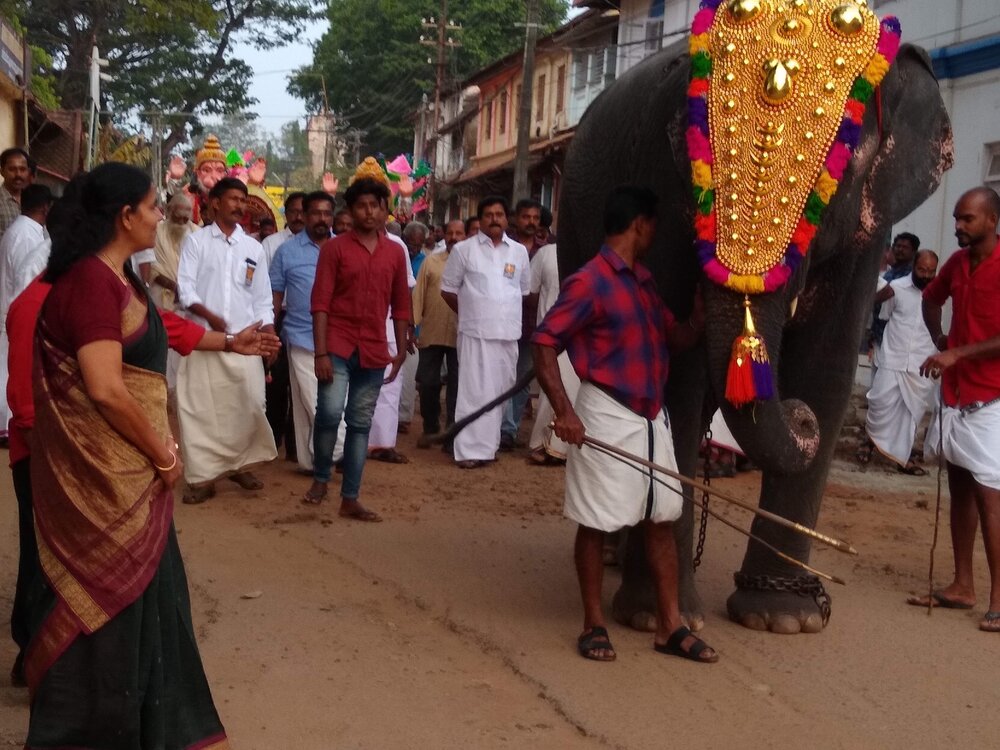
Unexpected bonuses like this parade (and a Bharat Bandh) enlivened the journey to the palace each day. The palace is right next to the Padmanabha Swamy temple in Thiruvananthapuram.
Dr. S. Karthik, Trivandrum Sri. Rajesh and Sri. V. Suresh all worked magic on the Ghatam. A simple clay pot was transformed into a source of amazing rhythm in their hands. The violin by both Smt. S.R. Rajashree and her brother, Sri. S.R. Mahadev Sarma; also by Avaneeswaram Sri S.R. Vinu (not a relation) was so uplifting. Of special mention is that Sri. S. Varadarajan accompanied on the violin, both the Sangeetha Kalanidhis – but played so differently to suit each singer, that it could have been two different violin players! We’re forced to leave without mentioning the performance of many talented artists – everyone that was on stage was a master.

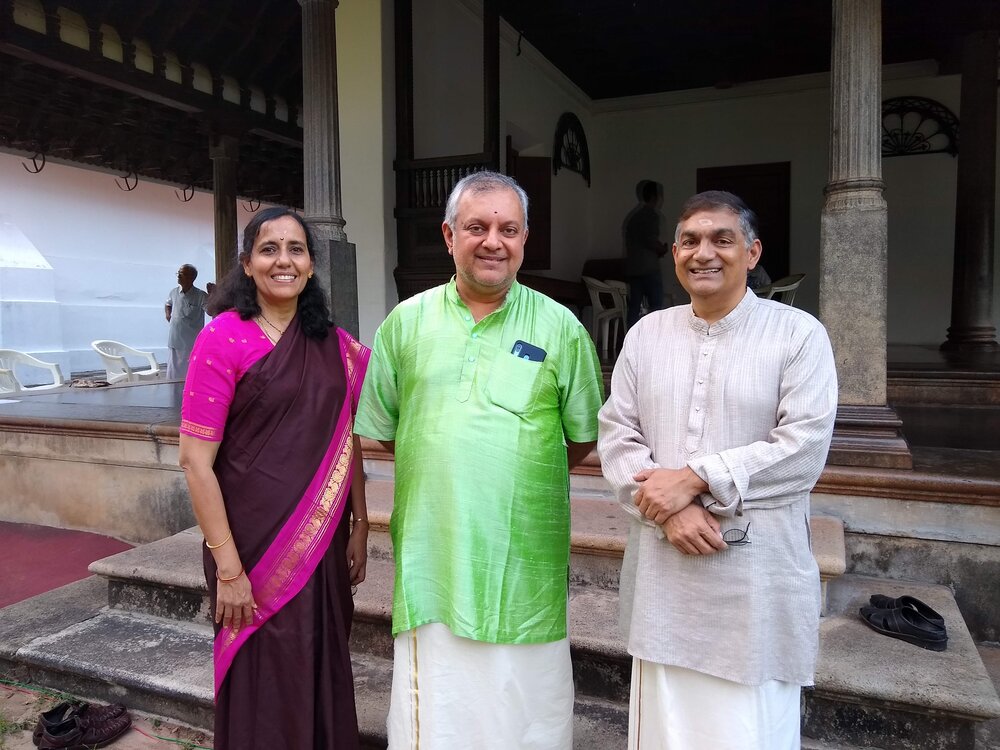
We got to have a short conversation and a photo on the palace steps with the organizer, lover of music and great singer, Sri. Rama Varma. We are yet to hear him play the Veena. He is so down to earth and approachable. The book that his friends brought out on his 50th birthday makes for an interesting read.
We had visited the Padmanabhaswamy temple earlier that evening.
>
“But we were not seated the whole time – oh no, our spirits soared!”
Clearly, as we said right at the beginning, we are not experts in music, so we won’t even attempt a review in the traditional sense. In a few days, the entire festival will likely be available for you to enjoy on YouTube. What we learned is that every song (roughly a hundred) sung during the festival was a composition by Maharaja Swathi Thirunal, who was a contemporary of Tyagaraja, Syama Sastri and Muthuswami Dikshitar. More on wikipedia and other sites, for the curious. What we have experienced is simply mind-blowing. Every performer was accomplished. Some were legends. A few others, we think, are legends in the making. We experienced a diversity among age, gender, experience, adherence to rigid orthodoxy and even inclusiveness of the audience. The main point is that every evening, we were seated by 5:45 and reluctantly left our chairs after 9. But we were not seated the whole time – oh no, our spirits soared! Although not quite as nimble as Sri. Varma’s, our bodies too swayed to the music, danced in ecstasy, unintentionally let out gasps and shouted “Shabash” (Bravo)! And to make ignorant music lovers experience this bliss – therein lies the beauty, experience and simply put, the love that each performer brought to this beautifully decorated stage.
PS: We may have a few errors in what we wrote here – please tell us and we will fix them.
Here is a gallery of images from the festival:
